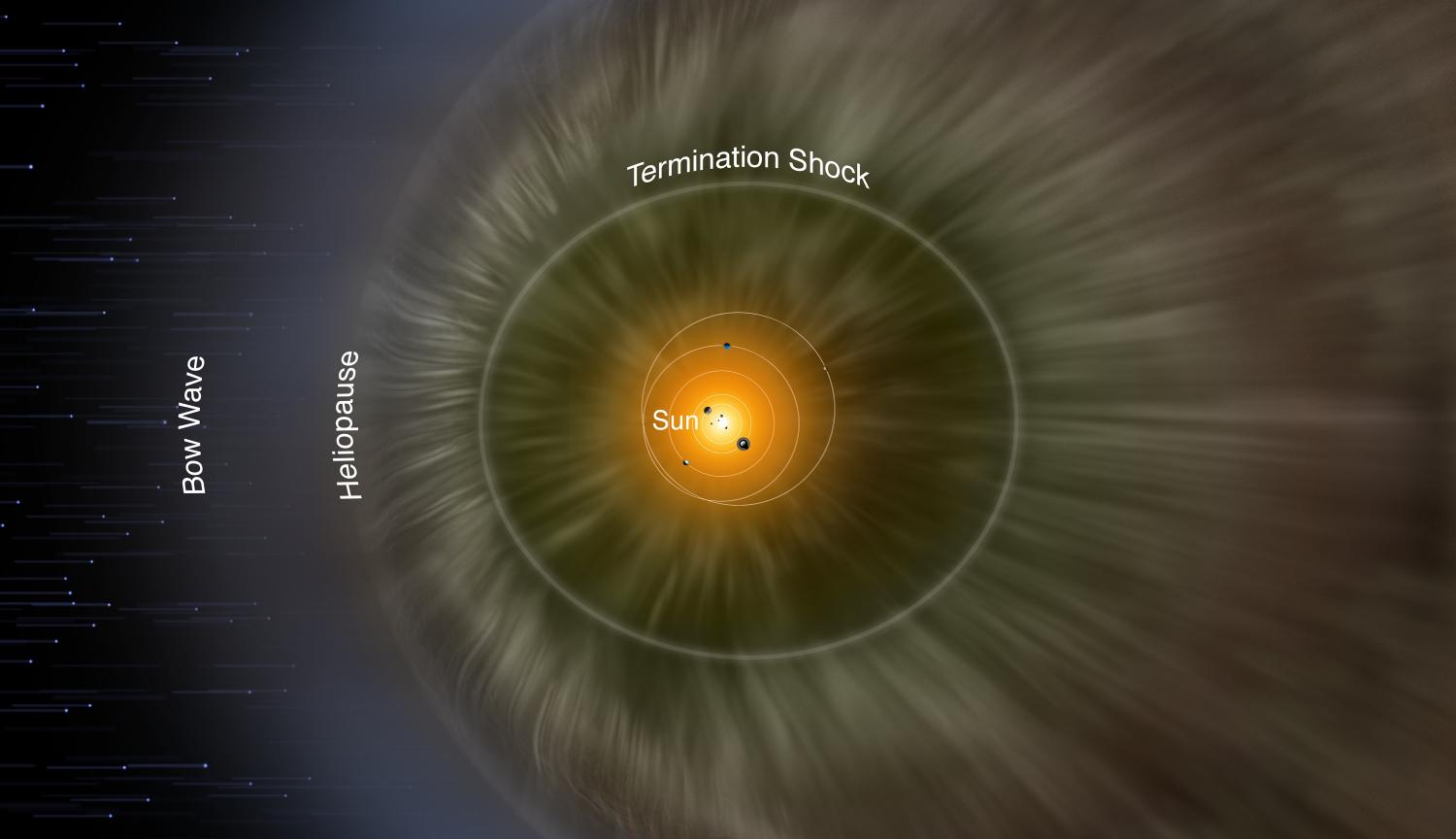At the end of the Solar System, there’s a surprisingly high pressure
Our Sun emits particles and radiation around the clock. These emissions propagate far into space in all directions and form the heliosphere. At the same time, our Solar System is constantly bombarded from interstellar space by cosmic radiation from a wide range of sources. Way out in the far outer edges of our Solar System, a few billion kilometers from the Sun, these streams of radiation meet each other from both directions in the so-called heliosheath.
The pressure appears to be significantly higher there than researchers previously thought. This was discovered by astronomers with the help of the two Voyager probes that have had only one goal since 1977 – to leave the Solar System. At the time of the measurements, Voyager 1 had already reached interstellar space (but was still within the Solar System as defined by its gravitational effects), while Voyager 2 was still flying through the heliosheath.
“It really was perfect timing,” says Jamie Rankin, primary author of the study and astronomer at Princeton University in New Jersey. “Voyager 1 had just transitioned into interstellar space. But we hope to find even more events in the probe’s data stream that will allow us to look into the changes in the heliosheath.”
The researchers were able to use an event, namely a so-called “global merged interaction region,” which is caused by solar activity. Here, the Sun emits an enormous flood of energy into space that can be detected even billions of kilometers away. This flood also spills over the heliosheath and surges into interstellar space, where it arrives as a strong wave front pushed along by magnetic fields.
When one of these wave fronts reached the heliosheath in 2012, it was detected by Voyager 2. This showed that the influence of cosmic radiation decreased temporarily. Four months later, the researchers saw a similar change at Voyager 1, which was already located in interstellar space. Because the distance of the probes was known, the researchers could calculate the pressure acting against the wave (it was higher than expected) and also its velocity. This was calculated at 300 kilometers per second in the heliosphere – approximately a thousand times the speed of sound in air.
But the effects on Voyager 1 were also different from those on Voyager 2 in another way. At Voyager 1, only the component of the cosmic radiation moving perpendicular to the local magnetic field decreased. This asymmetry indicates that something previously unknown must have happened to the wave coming from the Sun when it passed through the heliosheath.
“Why the change in the cosmic radiation would be different inside and outside the heliosheath remains an unanswered question,” says Rankin.

